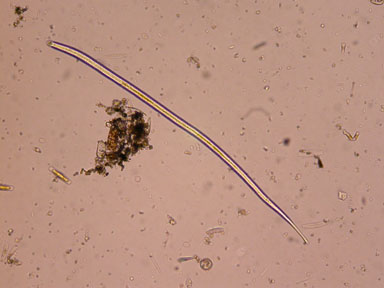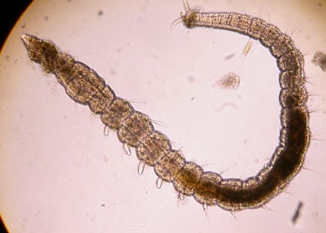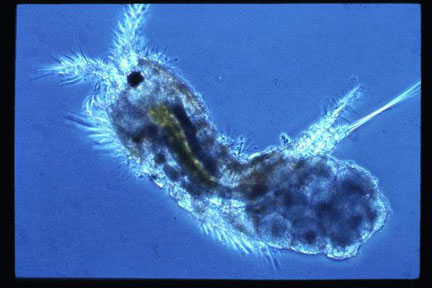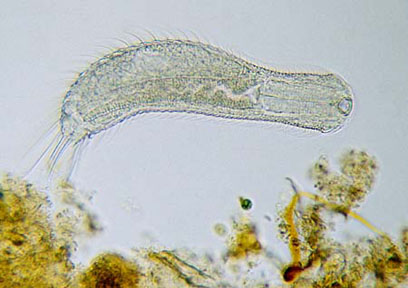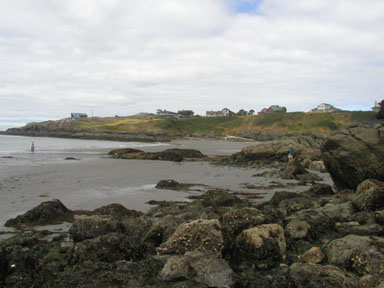
Looking west toward the sandy beach of Eagle Cove

Looking east from the sandy beach to the rocky outcrop
Meiofauna: Introduction and Methods
At first glance, one might view a sandy beach as a barren and depauperate habitat. Such a view is undoubtedly biased by the scale at which humans operate. Small organisms living in these habitats are ubiquitous and diverse, but they are easily overlooked and therefore poorly appreciated. Community interactions that take place between grains of sand are less familiar and understandable than, for example, interactions in exposed parts of the intertidal. There is, in fact, no guide to the meiofauna of the Pacific coast. These animals are, however, dynamic and biologically interesting members of the Eagle Cove marine assemblage, and as alien in appearance and as quirky in behavior as anything that walks on land or does bellyflops in the harbor for whale-watching tourists.
Our team sampled sand from the beach using a small hollow cylinder core, outfitted with a plug at the top to prevent loss of sediment when the core was removed. We concentrated on sand at depths less than 12 cm. The small animals that live here cling tightly to it for protection and to avoid being washed away as the beach drains. To induce the animals to release from the sand grains, we mixed each sediment sample 1:1 with 1M MgC12, gave the capped container a hard shake, and decanted the suspended animals onto a filter. Each sample was then examined under a dissecting microscope, and animals were transfered with a small pipette to slides. Cover slips with clay feet were used to avoid crushing animals, and the animals were observed under a compound light microscope.

